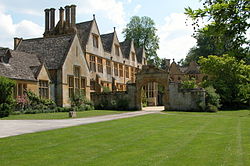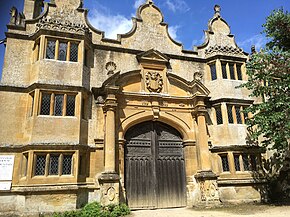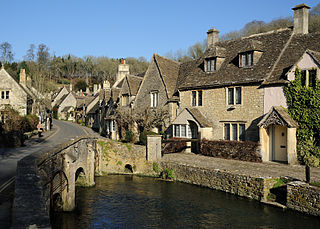
The Cotswolds is a region in central South West England, along a range of rolling hills that rise from the meadows of the upper River Thames to an escarpment above the Severn Valley, Bath and Evesham Vale.
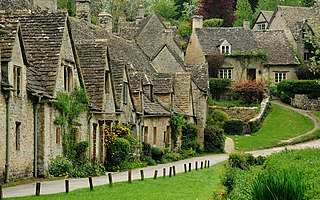
Gloucestershire is a ceremonial county in South West England. It is bordered by Herefordshire to the north-west, Worcestershire to the north, Warwickshire to the north-east, Oxfordshire to the east, Wiltshire to the south, Bristol and Somerset to the south-west, and the Welsh county of Monmouthshire to the west. The city of Gloucester is the largest settlement and the county town.

Tewkesbury is a market town and civil parish in the north of Gloucestershire, England. The town grew following the construction of Tewkesbury Abbey in the twelfth century and played a significant role in the Wars of the Roses. It stands at the confluence of the River Severn and the River Avon, and thus became an important trading point, which continued as railways and, later, the M5 and M50 motorway connections were established. The town gives its name to the Borough of Tewkesbury, a local government district of Gloucestershire. The town lies on the border with Worcestershire, marked largely by the Carrant Brook.

The Cotswold Way is a 102-mile (164 km) long-distance footpath, running along the Cotswold Edge escarpment of the Cotswold Hills in England. It was officially inaugurated as a National Trail on 24 May 2007 and several new rights of way have been created.

The region now known as Gloucestershire was originally inhabited by Brythonic peoples in the Iron Age and Roman periods. After the Romans left Britain in the early 5th century, the Brythons re-established control but the territorial divisions for the post-Roman period are uncertain. The city of Caerloyw was one centre and Cirencester may have continued as a tribal centre as well. The only reliably attested kingdom is the minor south-east Wales kingdom of Ergyng, which may have included a portion of the area. In the final quarter of the 6th century, the Saxons of Wessex began to establish control over the area.

Stanway is a small village and civil parish in the county of Gloucestershire, England, and about 1 mile south of Stanton: both villages are on the Cotswold Way. The parish includes the villages of Didbrook, Hailes, Taddington and Wood Stanway. The population of the parish at the 2011 census was 343. It is part of the Tewkesbury Borough Council area.
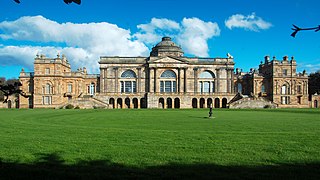
Gosford House is a neoclassical country house around 2 miles (3 km) northeast of Longniddry in East Lothian, Scotland, on the A198 Aberlady Road, in 5,000 acres (2,000 ha) of parkland and coast.

Dumbleton is a village and civil parish in the Tewkesbury district, in the county of Gloucestershire, England. The village is roughly 20 miles from the city of Gloucester. The village is known to have existed in the time of Æthelred I who granted land to Abingdon Abbey, and it is mentioned in the Domesday Book.

Beckley Park is an English country house located near the village of Beckley, in Oxfordshire, England.

Prescott is a settlement and civil parish in the Cotswolds within the English county of Gloucestershire. There are scattered farms and houses. There may once have been a settlement around the chapel.

Stanton is a village and civil parish in Tewkesbury Borough, Gloucestershire, England. The village is a spring line settlement at the foot of the Cotswold escarpment, about 2+1⁄2 miles (4 km) southwest of Broadway in neighbouring Worcestershire. Broadway is Stanton's postal town. The 2011 Census recorded the parish's population as 198.

Chavenage House, Beverston, Gloucestershire is a country house dating from the late 16th century. The house was built in 1576 and is constructed of Cotswold stone, with a Cotswold stone tiled roof. David Verey and Alan Brooks, in their Gloucestershire Pevsner, describe the house as "the ideal sixteenth-century Cotswold stone manor house". Chavenage is a Grade I listed building.
Cirencester and Tewkesbury was a parliamentary constituency in Gloucestershire which returned one Member of Parliament (MP) to the House of Commons of the Parliament of the United Kingdom. It was created for the 1918 general election and abolished for the 1997 general election when it was partly replaced by the new constituencies of Cotswold and Tewkesbury.
Richard Tracy was an English lay Protestant reformer and Member of Parliament.

James Donald Charteris, 13th Earl of Wemyss and 9th Earl of March,, also known as Jamie Neidpath, is a British peer and landowner.

Cutsdean Quarry is a 0.83-hectare (2.1-acre) nature reserve in Gloucestershire, England. The site is listed in the 'Cotswold District' Local Plan 2001-2011 as a Key Wildlife Site (KWS).

Wolf Hall is a British television serial first broadcast on BBC Two in January 2015. The six-part series is an adaptation of two of Hilary Mantel's novels, Wolf Hall and Bring Up the Bodies, a fictionalised biography documenting the rapid rise to power of Thomas Cromwell in the court of Henry VIII through to the death of Sir Thomas More, followed by Cromwell's success in freeing the king of his marriage to Anne Boleyn. Wolf Hall was first broadcast in April 2015 in the United States on PBS and in Australia on BBC First. It was reported in 2022 that a second series, covering the final novel in the trilogy, was in pre-production, with Mark Rylance and director Peter Kosminsky returning.

Robert Tracy of Stanway House, nr. Tewkesbury, Gloucestershire was an English Member of Parliament.
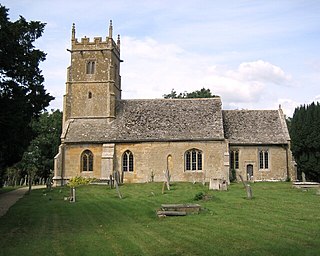
Didbrook is a small village and former civil parish, now in the parish of Stanway, in the Tewkesbury district, in Gloucestershire, England, 8 miles (13 km) north-east of Cheltenham. The village lies near the foot of the Cotswold escarpment. In 1931 the parish had a population of 160.

Hailes is a small village and former civil parish, now in the parish of Stanway, in the Tewkesbury district, in Gloucestershire, England, 2 miles (3.2 km) north-east of Winchcombe. The village lies at the foot of the Cotswold escarpment. The remains of Hailes Abbey, a Cistercian abbey active from 1246 to 1539, are here. In 1931 the parish had a population of 83.
